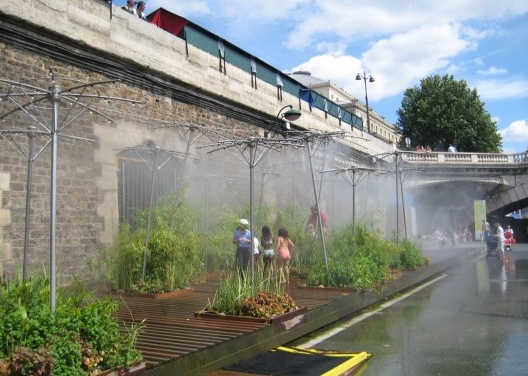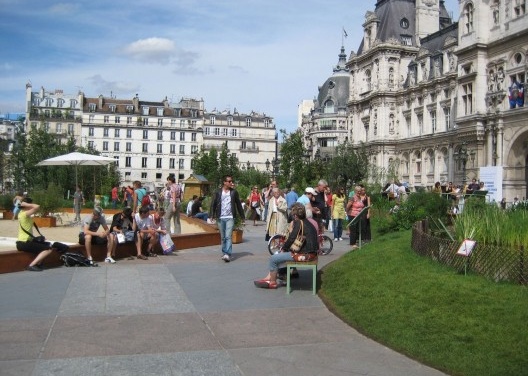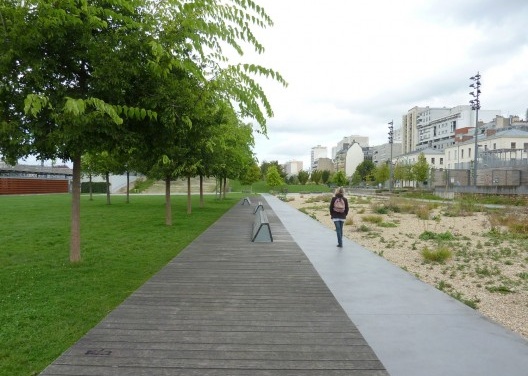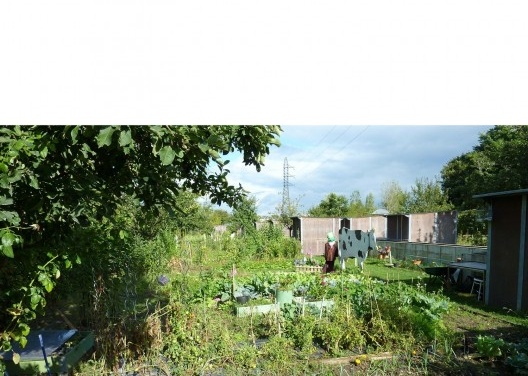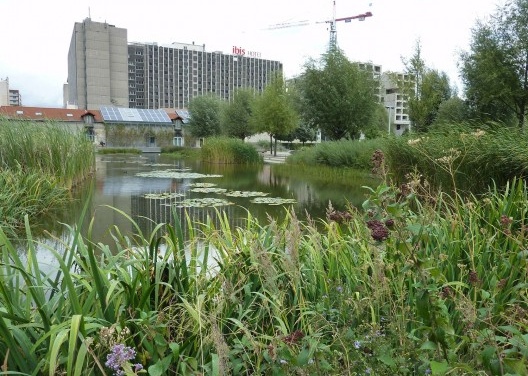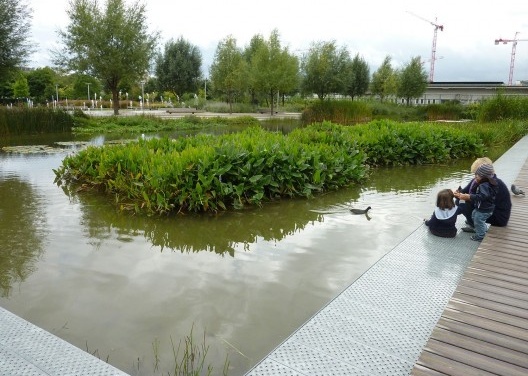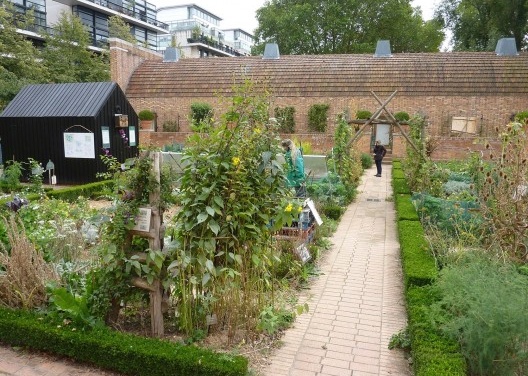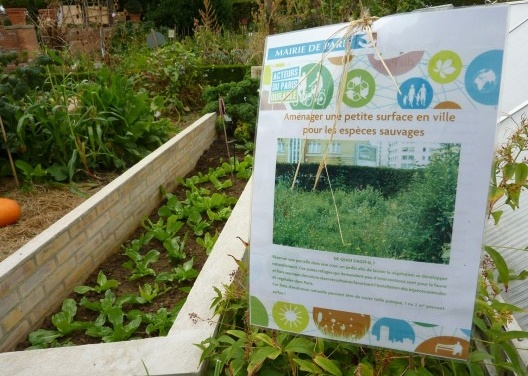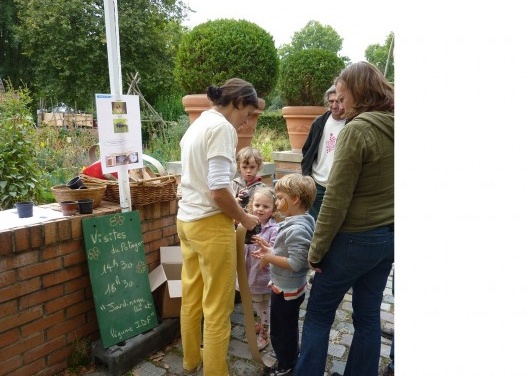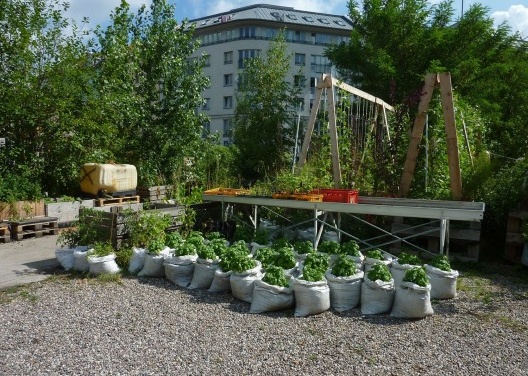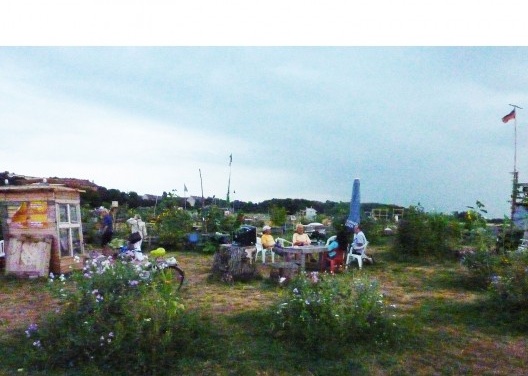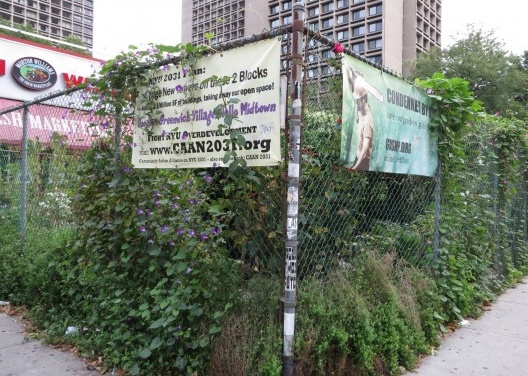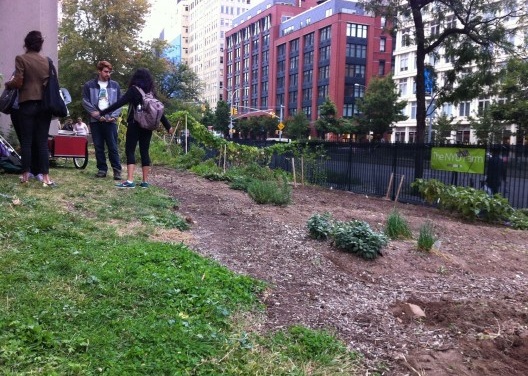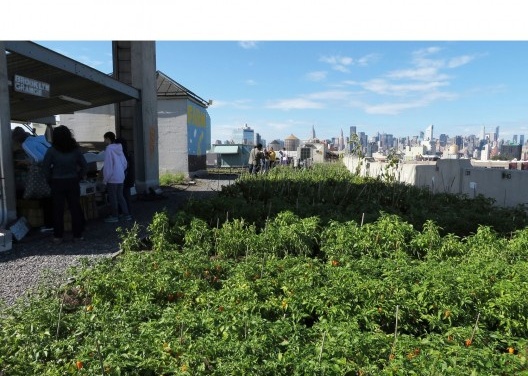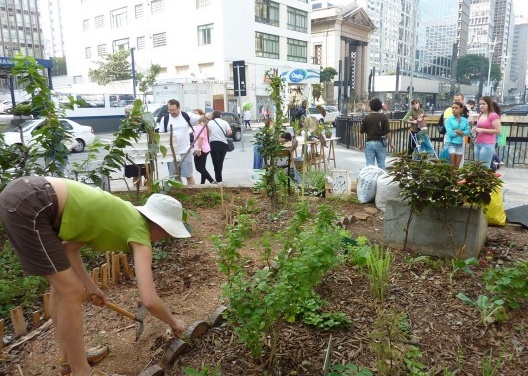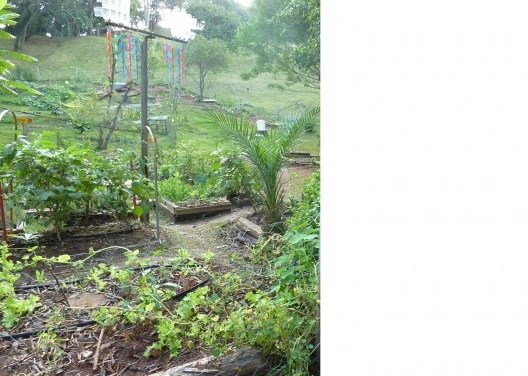Urban food production is gaining momentum with launching of books, seminars and congresses, websites and social media. Some cities have programs to promote people-nature direct contact through vegetable gardens — common or in allotment gardens. Urban dwellers are becoming more and more engaged in cultivating and collaborating in common public spaces, transforming many underused lawns into productive landscapes.
I have been inspired by these issues and have been investigating and visiting many places in search of interesting examples.
Paris
Paris has been an exciting case not only because it is a large and complex metropolis, but because it also has an important role in people’s imaginations, being one of the most visited cities in the world. Paris attracts visitors from everywhere looking for art, culture, fashion, architecture, and parks and gardens! Yes, Paris has numerous parks and gardens of all sizes, shapes, functionality and vegetative cover. They may be historic, recreational, ecological and are important part of the urban forest, like Bois de Boulogne and Bois de Vincennes.
I have gone to Paris very often for decades. In the last years I have seen a great transformation in how Parisians are dealing with urban nature and opening space for people, biodiversity and food production. It is happening not only in parks and gardens, but in streets, small lots, roofs, in public and private areas. Along the river Seine, in the summer streets are transformed as urban beaches. The city has promoted educational events in all spaces and scales, and my perception is that they are making a silent revolution in the way people value nature and have enhanced the day-to-day interrelation with the river, parks and the urban vegetable gardens.
In recent years Gilles Clément, a landscape designer and writer, has done a terrific job in changing minds, both of decision-makers and regular people. He has designed and written about landscape and gardens, as the Tier Paysage(Third Landscape — the unmanaged derelict areas that abound in cities and house an expressive biodiversity); and the Jardins en Mouvement (Changing Gardens) — gardens where the designers and the caretakers work with nature so the vegetation can thrive with diversity in surprising ways; among other publications.
My friends Miguel, Pablo Georgieff and Nicolas Bonnenfant are architects and landscape architects working with communities to build gardens together (Coloco). They explore the urban biodiversity in many ways, sometimes in urban performances with public participation.
The square in front of the Hotel de Ville (City Hall) hosts different events all year long. In the summer I saw an installation of samples of regional ecosystems to educate people about the nature around them. Many new parks have been designed to recreate those ecosystems. For instance, Jardin d’Éole has beautiful small wetlands and sandy gardens where once there was a train track maneuver area.
But what strikes me the most is the food planting that is being incorporated in parks and other public and private spaces. It is not a new concept, but today they are part of all the neighborhoods. The public program Jardins Familiaux et Collectifs (Family and Collective Gardens) is more than 100 years old and gives urbanites a chance to keep contact with soil, planting, digging and picking their own food or flowers. There is a long waiting list for a plot of land to explore your own garden, for food production or flowers.
The city is developing a former industrial area in the northwestern 17emeArondissement (17th district), Clichy-Batignolles. The strategy was to start with the new park Martin Luther-King. The park has achieved social and ecological goals, with spaces for a variety of activities, a built wetland and a productive garden, as part of the Jardin Partagé – Main Verte city program (Shared Garden – Green Hand ). This is an amazing way to give school kids the opportunity to cultivate food in public areas nearby. Each class has its own plot. The common vegetable garden has signs that show who is planting what.
The Main Verte is not only happening in new parks, it is also in Bercy Park, which is now some decades old (1). Every year in September, the city promotes a weekend dedicated to the gardens, with an emphasis in food production: it is the “Fête des Jardins” (Gardens Party).
Berlin
There is a strong bottom-up movement looking “backwards” to reconnect people with nature in dense urban areas. I was in Berlin last July (2013), and visited two urban gardens that really impressed me: the Prinzessinnengarten at the Moritz Platz, and Tempelhof Park. Both are examples of active social engagement with ecological issues related to food and biodiversity. They are unique places, and have been developed by residents intending to conserve open areas from real estate development. The first is located in the heart of the city, in a former derelict space. An association named Nomadic Green was created and they rented the space from the city and have a restaurant, a café, and a small library. The planting is in portable containers — that’s the origin of their name. In just few years the transformation of the place and people has been absolutely astonishing .
Tempelhof Park is a former airport that was converted in a public park in the South of Berlin. It is impressive in its size. People use and love it. Most remarkable to me is the area where the residents created vegetable gardens and “living rooms” in open air made of recycled material. It is a truly hospitable outdoor place. Even with a strong rain at the end of the day, it was pleasant being in a communal tent, with the sound of the water and wind, and nice conversation with interesting people.
New York
Talking about large cities and food production, New York City is really impressive. There are numerous community gardens in all boroughs, such as the one in the West Side Community Garden. In the area of the New York University there are two examples of engagement with nature. At LaGuardia Corner Gardens, located next to the New York University, there are people that care for a community garden, working to keep it beautiful and with rich biodiversity. It is under threat, because the “NYU 2031” plan proposes building a new high rise on the site. The university itself has the NYU Urban Farm, and when I was there young students were concluding their work in the garden.
On a commercial scale, the striking innovation is the transformation of gray roofs to urban farms by the Brooklyn Grange. They have two facilities: the first is located in Brooklyn and the second in Queens. They are opened to guided visits on the market days (2). I visited the Queens facility on a beautiful Saturday morning last October (2013). There were a lot of visitors, people buying fresh produce, learning about food planting, appreciating nature on the rooftop of an old building with an astonishing view of Manhattan.
São Paulo
In the city where I was born, São Paulo, Brazil, there is a group called Hortelões Urbanos (Urban Vegetable Producers — in a loose translation) that is transforming places, minds and hearts. It a pro-life movement — in a broad sense — started after two journalists completed a permaculture course and decided to grow their own food. The initial place was at Praça das Corujas (Owl’s Place), located in a nice neighborhood. They took over a lawn in this small park to plant food and flowers, and decorated with recycled artwork. In a short period of time, they were joined by more and more residents and replicated the intervention in other public and private spaces. They started a group on the Internet, and in a year and a half they have more than 6,000 members! It is like a good virus inoculated in urbanites in search of a better quality of life.
Farmer’s Markets go along with those movements. Producers get together to sell their local production to neighbors. Local small urban farmers are gathering to keep productive properties in urban areas in Rio de Janeiro. They have support of local “eco-chefs” that run fancy restaurants. Local is beautiful because it conserve people’s jobs and relationships, incentivizes attachment to the land and nature, and maintains traditions and culture, and most of all promotes people’s values and emotions.
The benefits are evident: healthy food, people-nature reconnection, better local climate and water quality, more biodiversity and, most important, happier and healthier people. There are many scientific studies that prove the ecosystem services provided by biodiversity and organic food production are essential to maintain life on planet Earth. The recently released book Urbanization, Biodiversity and Ecosystem Services led by Thomas Elmqvist is a must read for people interested in learning more about the benefits of nature in the cities. Productive and biodiverse landscapes should replace lawns and cosmetic gardens with few species, which need costly and constant maintenance. Those areas may be of great importance to build more livable, sustainable and resilient cities.
After years of research, Marco Schmidt (Water Paradigm) eloquently states that extensive land-use change from green to gray, and other uses that cause biodiversity eradication and soil depletion, are important drivers of climate change because there is an alteration in the evaporation cycle that is responsible for the hydrologic cycle which influences local and global climate. This is often ignored. Soils and plants capture carbon and release oxygen, which is fundamental to life; drain and filter water; prevent floods and landslides; cool temperatures and regulate local climate. Urbanization is increasing and so is land-cover change. If we reverse the process, greening and including water in plans and design in many ways in private and public urban areas, we can contribute to build more sustainable and resilient cities. Many of the most pressing crisis may be mitigated and even adapt urban areas for the unexpected challenges that climate change is already bringing to us all, wherever in this planet we may be.
And if public and private lawns were transformed in productive landscapes, planted with food and associated flora for a healthy biodynamic interaction among biodiversity? And if impervious surfaces, such as gray rooftops, sidewalks, parking lots and school yards became green with functional, visible, educational and recreational with water features accessible to all: kids and adults and seniors? And if people, local arts and culture, biodiversity, water bodies and mobility were planned and designed to harmonize communities with plenty of amenities for all ages? What a marvelous cities we would have: livable cities.
These are not dreams. These places exist and people love them, as we have seen above. People have the power to transform the world little-by-little, garden-by-garden, block-by-block, community-by-community.
So, let’s get started!
notes
NE
This article has been published in the website The Nature of Cities in November 10, 2013.
1
See the map with all locations here.
2
Check the website to see openings that vary according to different seasons.
about the author
Cecilia Herzog is the president and co-founder of Inverde Institute, which aims to educate and raise public awareness about green infrastructure and the role of biodiversity and ecosystems services in cities to build resilience and lower the ecological footprint. She is Associate Professor and Lecturer at Pontifícia Universidade Católica do Rio de Janeiro (PUC-Rio). She researches how different cities in the world have transformed their landscapes to support biodiversity providing a better quality of life to people in harmony with nature. She has just released the book in Portuguese “Cities for All: (re)learning to live with NATURE” (Cidades para TODOS: (re)aprendendo a conviver com a NATUREZA).



